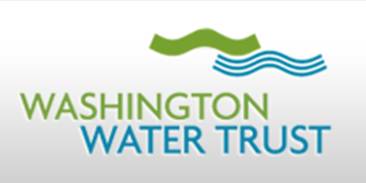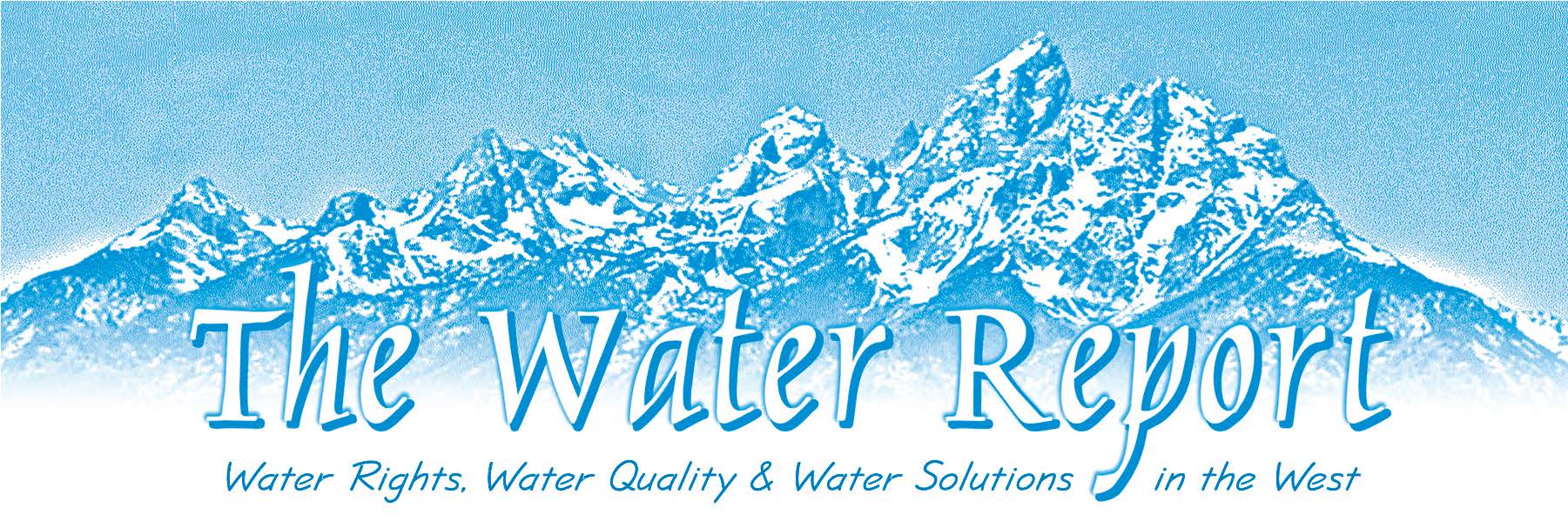
September to November 2024 Edition

Session 2: Fishable
Summary by Lisa Reymann – Water Resources Program Planner, WA Department of Ecology
Conference session 2 focused on projects to maintain fishable and healthy waters in the lower Yakima River and in the Skagit River Valley, and political history of indigenous peoples and their allies’ dedication and work to affirm and uphold tribal fishing rights.
 Derek Stuart, Northwest Hydraulic Consultants, opened with an overview on the thermal and physical barriers of the lower Yakima River where it meets the Columbia River at the Bateman Island Causeway. Not only does the artificial causeway block river flow, but it contributes to the lower Yakima being consistently 28 degrees Celsius on average in the summer near its confluence with the much colder Columbia. These high thermal conditions present an additional migration barrier to salmonids, including chinook, coho, and sockeye salmon, all of which thrive better in cooler temperatures and are deterred from entering the warmer Yakima. Researchers are using hydrodynamic modeling and geomorphic assessments to understand how potential causeway modifications could affect river temperatures at this intersection point. Simulations have been conducted of streamflow, velocity, and temperature surrounding Bateman Island, and sediment quality tests came back relatively clean with few chemicals of potential concern. Construction to remove the causeway is projected to start in 2026 with additional needs including cost-benefit analysis, funding, and stakeholder objective considerations.
Derek Stuart, Northwest Hydraulic Consultants, opened with an overview on the thermal and physical barriers of the lower Yakima River where it meets the Columbia River at the Bateman Island Causeway. Not only does the artificial causeway block river flow, but it contributes to the lower Yakima being consistently 28 degrees Celsius on average in the summer near its confluence with the much colder Columbia. These high thermal conditions present an additional migration barrier to salmonids, including chinook, coho, and sockeye salmon, all of which thrive better in cooler temperatures and are deterred from entering the warmer Yakima. Researchers are using hydrodynamic modeling and geomorphic assessments to understand how potential causeway modifications could affect river temperatures at this intersection point. Simulations have been conducted of streamflow, velocity, and temperature surrounding Bateman Island, and sediment quality tests came back relatively clean with few chemicals of potential concern. Construction to remove the causeway is projected to start in 2026 with additional needs including cost-benefit analysis, funding, and stakeholder objective considerations.
 Jenna Friebel, Skagit Drainage and Irrigation Districts Consortium, discussed agricultural perspectives on riparian buffers in the Skagit Valley. The advantages of such buffers of trees, shrubs, or other recurring plants adjacent to bodies of water or wetlands include increased drainage, natural runoff filtration, and potential erosion stability for neighboring farms and agricultural fields. By establishing regulatory buffers that are fostered and left uncultivated through the Voluntary Stewardship Program, more areas within the county are able to benefit. Additional integrated natural resources planning includes crop rotation to alternate harvest years and help keep land viable and prevent disease. Friebel stressed the need to be cognizant of the types of plants utilized in the buffers and their impacts. For example, wind that blows through the valley keeps pests at bay, and trees along the buffer areas could block airflow and thus reduce its positive impact. Funding and continued education is essential to ensure participation and effectiveness of these programs.
Jenna Friebel, Skagit Drainage and Irrigation Districts Consortium, discussed agricultural perspectives on riparian buffers in the Skagit Valley. The advantages of such buffers of trees, shrubs, or other recurring plants adjacent to bodies of water or wetlands include increased drainage, natural runoff filtration, and potential erosion stability for neighboring farms and agricultural fields. By establishing regulatory buffers that are fostered and left uncultivated through the Voluntary Stewardship Program, more areas within the county are able to benefit. Additional integrated natural resources planning includes crop rotation to alternate harvest years and help keep land viable and prevent disease. Friebel stressed the need to be cognizant of the types of plants utilized in the buffers and their impacts. For example, wind that blows through the valley keeps pests at bay, and trees along the buffer areas could block airflow and thus reduce its positive impact. Funding and continued education is essential to ensure participation and effectiveness of these programs.
 Cecila Gobin, Northwest Indian Fisheries Commission and member of the Tulalip Tribes, gave a review of major tribal treaty right cases and their relationship with the Clean Water Act (1972). Tribes in the area of present-day western Washington signed treaties with the United States government in 1854 and 1855 to relinquish large portions of their ancestral land while maintaining, “the right of taking fish, at all usual and accustomed grounds and stations… in common with all citizens of the Territory…” This was an essential priority to ensure cultural, economic, and ceremonial access to fish for future generations.
Cecila Gobin, Northwest Indian Fisheries Commission and member of the Tulalip Tribes, gave a review of major tribal treaty right cases and their relationship with the Clean Water Act (1972). Tribes in the area of present-day western Washington signed treaties with the United States government in 1854 and 1855 to relinquish large portions of their ancestral land while maintaining, “the right of taking fish, at all usual and accustomed grounds and stations… in common with all citizens of the Territory…” This was an essential priority to ensure cultural, economic, and ceremonial access to fish for future generations.
- The first case reviewed was the United States vs Washington (1974), also known as the Boldt Decision, which confirmed this language, equal sharing of fish, and officially acknowledged tribal co-management of the state’s fisheries.
- Phase II of U.S. vs Washington (1980), also known as the Orrick Decision, extended treaty tribes’ share to include hatchery fish and affirmed the right to have fish protected from environmental degradation.
- In the context of the Clean Water Act, the objective of Section 303(d) is, “...the restoration and maintenance of the chemical, physical, and biological integrity of the country’s water… (and) achieve water quality that is both ‘fishable’ and ‘swimmable.’”
- In 2001, tribes filed a lawsuit against the state of Washington to address failing and fish-blocking culverts, pathways which tunnel water away from roads or highways and prevent floods from runoff. The suit was ruled in favor of the tribes and required the state to repair the infrastructure.
Tribal access to fish continues to be threatened due to climate change impacts, habitat loss, and declining populations. This negatively impacts tribal cultures and communities as a result due to this fundamental and declining resource.

 Derek Stuart, Northwest Hydraulic Consultants, opened with an overview on the thermal and physical barriers of the lower Yakima River where it meets the Columbia River at the Bateman Island Causeway. Not only does the artificial causeway block river flow, but it contributes to the lower Yakima being consistently 28 degrees Celsius on average in the summer near its confluence with the much colder Columbia. These high thermal conditions present an additional migration barrier to salmonids, including chinook, coho, and sockeye salmon, all of which thrive better in cooler temperatures and are deterred from entering the warmer Yakima. Researchers are using hydrodynamic modeling and geomorphic assessments to understand how potential causeway modifications could affect river temperatures at this intersection point. Simulations have been conducted of streamflow, velocity, and temperature surrounding Bateman Island, and sediment quality tests came back relatively clean with few chemicals of potential concern. Construction to remove the causeway is projected to start in 2026 with additional needs including cost-benefit analysis, funding, and stakeholder objective considerations.
Derek Stuart, Northwest Hydraulic Consultants, opened with an overview on the thermal and physical barriers of the lower Yakima River where it meets the Columbia River at the Bateman Island Causeway. Not only does the artificial causeway block river flow, but it contributes to the lower Yakima being consistently 28 degrees Celsius on average in the summer near its confluence with the much colder Columbia. These high thermal conditions present an additional migration barrier to salmonids, including chinook, coho, and sockeye salmon, all of which thrive better in cooler temperatures and are deterred from entering the warmer Yakima. Researchers are using hydrodynamic modeling and geomorphic assessments to understand how potential causeway modifications could affect river temperatures at this intersection point. Simulations have been conducted of streamflow, velocity, and temperature surrounding Bateman Island, and sediment quality tests came back relatively clean with few chemicals of potential concern. Construction to remove the causeway is projected to start in 2026 with additional needs including cost-benefit analysis, funding, and stakeholder objective considerations. Jenna Friebel, Skagit Drainage and Irrigation Districts Consortium, discussed agricultural perspectives on riparian buffers in the Skagit Valley. The advantages of such buffers of trees, shrubs, or other recurring plants adjacent to bodies of water or wetlands include increased drainage, natural runoff filtration, and potential erosion stability for neighboring farms and agricultural fields. By establishing regulatory buffers that are fostered and left uncultivated through the Voluntary Stewardship Program, more areas within the county are able to benefit. Additional integrated natural resources planning includes crop rotation to alternate harvest years and help keep land viable and prevent disease. Friebel stressed the need to be cognizant of the types of plants utilized in the buffers and their impacts. For example, wind that blows through the valley keeps pests at bay, and trees along the buffer areas could block airflow and thus reduce its positive impact. Funding and continued education is essential to ensure participation and effectiveness of these programs.
Jenna Friebel, Skagit Drainage and Irrigation Districts Consortium, discussed agricultural perspectives on riparian buffers in the Skagit Valley. The advantages of such buffers of trees, shrubs, or other recurring plants adjacent to bodies of water or wetlands include increased drainage, natural runoff filtration, and potential erosion stability for neighboring farms and agricultural fields. By establishing regulatory buffers that are fostered and left uncultivated through the Voluntary Stewardship Program, more areas within the county are able to benefit. Additional integrated natural resources planning includes crop rotation to alternate harvest years and help keep land viable and prevent disease. Friebel stressed the need to be cognizant of the types of plants utilized in the buffers and their impacts. For example, wind that blows through the valley keeps pests at bay, and trees along the buffer areas could block airflow and thus reduce its positive impact. Funding and continued education is essential to ensure participation and effectiveness of these programs. Cecila Gobin, Northwest Indian Fisheries Commission and member of the Tulalip Tribes, gave a review of major tribal treaty right cases and their relationship with the Clean Water Act (1972). Tribes in the area of present-day western Washington signed treaties with the United States government in 1854 and 1855 to relinquish large portions of their ancestral land while maintaining, “the right of taking fish, at all usual and accustomed grounds and stations… in common with all citizens of the Territory…” This was an essential priority to ensure cultural, economic, and ceremonial access to fish for future generations.
Cecila Gobin, Northwest Indian Fisheries Commission and member of the Tulalip Tribes, gave a review of major tribal treaty right cases and their relationship with the Clean Water Act (1972). Tribes in the area of present-day western Washington signed treaties with the United States government in 1854 and 1855 to relinquish large portions of their ancestral land while maintaining, “the right of taking fish, at all usual and accustomed grounds and stations… in common with all citizens of the Territory…” This was an essential priority to ensure cultural, economic, and ceremonial access to fish for future generations.

